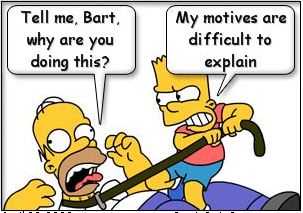|
3. Dialogue
Here’s a cheap trick. If your dialogue lies flat on the page and refuses to perk up, try turning statements into questions. For example:
A: ‘I wanted to see Mrs Hallam.’
B: ‘She’s not in. She’s gone to the supermarket.’
A: ‘I’ll go look for her there.’
B: ‘She’ll be back in half an hour.’
A: ‘Okay, I’ll wait for her here, then.’
—becomes—
A: ‘Is Mrs Hallam in?’
B: ‘No. You want her? She went to the supermarket.’
A: ‘Maybe I should go look for her there?’
B: ‘What’s the rush? She’ll be back in half an hour.’
A: ‘You think I should wait for her here?’
B: ‘Why not?’
That’s not the world’s most brilliant example, neither for flatness nor perking up. Still, there’s surely more back-and-forth bounce in the second version.
When we write prose, we write in statements—and the habit often sticks when we write dialogue. But listen to a real-life conversation, and it’s full of questions (along with interjections, commands, etc.) Even tag questions, as when we add ‘you know?’ at the end of a perfectly self-sufficient assertion—inviting a response, keeping the ball rolling. Increasing the number of questions doesn’t necessarily produce good dialogue, but it can be the first stage in overcoming the common disease of statement-itis.
|

|





